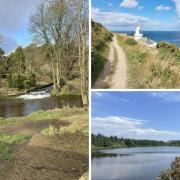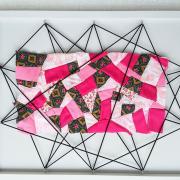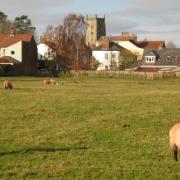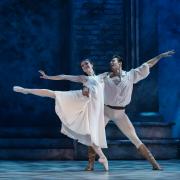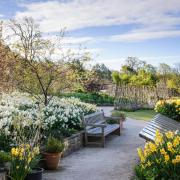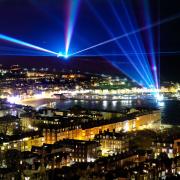A fascinating project is almost complete and is a reminder that Whitby Abbey's history did not stop when the monastery came to an end.
A life-size figure of a classical warrior, with a shield in one hand and a thrusting sword in the other, is to be restored to its original position near the entrance to Whitby Abbey, North Yorkshire.
English Heritage has launched a unique project to recast a `Borghese Gladiator' which historians believe stood in front of the spectacular Banqueting House - now the abbey visitor centre - built by Sir Hugh Chomley II in the 17th century.
One of Britain's foremost conservators, Rupert Harris, of London, has been commissioned to create the figure from a mould taken from a bronze of the same model in the Royal Collection.
The original marble Borghese statue was uncovered during excavations in Italy sometime before 1611. Signed by the sculptor Agasias of Ephesus, it was dated to about 100 BC, but was probably based on a much earlier Greek original.
Soon after it entered the collection of the Pope's powerful aide, Cardinal Borghese, thus acquiring its modern name of the Borghese Gladiator, and today it stands in the Louvre in Paris.
How a copy of this original came to stand on the wild Whitby Headland reveals much about how the upper crust of English society sought to keep up with their peers. Classical sculpture was fashionable in the 17th century and James I obtained a mould of Borghese's gladiator through an agent in Rome.
His son, Charles I, ordered a cast to be made and eventually other nobles followed the royal example.
Gladiators began to appear in classical gardens from Chatsworth House in Derbyshire to Castle Howard, North Yorkshire.
Not to be outdone, it seems Sir Hugh Chomley II, whose family fortune was based on the east coast alum trade, paid for his own figure to be made. Cast in bronze, it would have been a work of the highest quality and a statement of ambition, wealth and power.
Historians and archaeologists have pieced together the evidence for the Whitby gladiator. But they have failed to solve one mystery - what became of Chomley's original statue?
Jeremy Reed, English Heritage visitor operations director for the North, said: 'This fascinating project is a reminder that Whitby Abbey's history did not stop when the monastery came to an end. Thanks to the �5.7m Whitby Headland Project, we have been able to unearth a wealth of information about the postdissolution period, when Sir Hugh Chomley brought a very different kind of glamour to the Abbey Headland with his new house, works of art and cobbled gardens. Restoring the gladiator at the centre of the courtyard will set the seal on a decade of work to restore the Abbey Headland's glory.'
The casting of the bronze figure is well underway using the same technique employed to create King Charles' 17th century Borghese figure.
Meanwhile, skilled masons at William Anelay Ltd in York are creating the stone plinth on which the gladiator will once again stand, looking out over the chilly North Sea.
A grand public unveiling is planned for early next year.





